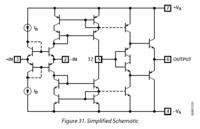Junus2012
Advanced Member level 5

- Joined
- Jan 9, 2012
- Messages
- 1,552
- Helped
- 47
- Reputation
- 98
- Reaction score
- 53
- Trophy points
- 1,328
- Location
- Italy
- Activity points
- 15,235
Hello
I found some op-amp design with slew rate in the order of several hundreds V/µV. I am just inquiring how to provide the required current for this condition if the capacitor is like 10 PF.
Thank you in advance
I found some op-amp design with slew rate in the order of several hundreds V/µV. I am just inquiring how to provide the required current for this condition if the capacitor is like 10 PF.
Thank you in advance


